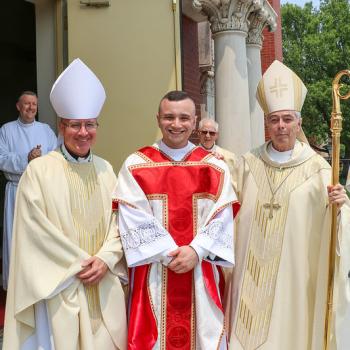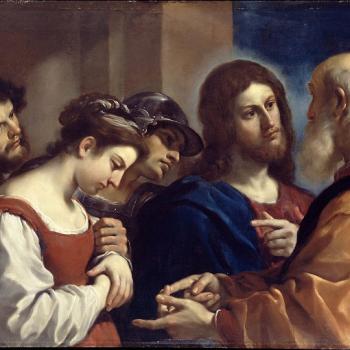The image of the Trinitarian relational God, who is both one and three, is reflected in male and female humanity. Just as in the person of God, in which there is union without loss of individual identity, so in male-female relationships (and supremely in marriage), there is union without loss of distinct, individual, sexual identity. Our sexuality reveals to us something of who God is in his Trinitarian being. Just as the three persons of the Trinity may not be confused but kept separate in identity and function, so the man and the woman cannot forsake their specific sexual identities and merge into one. Just as the Creator has unity, distinction, and ordered, productive relationships within himself, in like manner, so does the male/female human relationship, each with distinct, life-producing roles (Genesis 2:18). This sexuality is Twoist.
The meaning of this image is further clarified in the foundational text describing specifically heterosexual marriage, Genesis 2:24: "Therefore a man shall leave his father and his mother and hold fast to his wife, and they shall become one flesh." The ancient text states that in heterosexual marriage, sexual differences are joined in a creative and deep personal union. In this union, human beings imitate the being and image of God the Creator in a fruitful union of difference making possible the advent of human civilization. This is part of the ongoing providence of God, as Genesis 8:22 assures us: "While the earth remains, seedtime and harvest, cold and heat, summer and winter, day and night, [we could add, male and female] shall not cease." This is why the human couple is the crown of God's "very good" work (Genesis 1:31).
But there is more going on.
In this text, God was actually further defining his own image, as the Apostle Paul will later make clear. Inspired by the Holy Spirit, Paul in Ephesians 5:32 explains that the ancient text of Genesis 2:24 regarding God's institution of marriage contains "a mystery," a deep truth hidden in God, indeed, a "mystery" about God himself. It is the disarming truth that God the Creator, distinct from the creation, reveals himself as a lover of the creation, just as a husband loves his wife. In the Gospel, this astonishing mystery about God is manifested in Christ's love for the church. The work of the Son, who is the final revelation of the Trinitarian "image of God" (Colossians 1:15), achieves objectively in time and space the reconciliation of the Creator with fallen creatures. Is it any wonder that the final event of ultimate cosmic reconciliation between the Creator and creatures is described as a marriage, the "marriage supper of the lamb" (Revelation 19:7), when Christ the bridegroom comes to take his bride, the Church?
According to scripture, this is the ultimate, spiritual reason for sexual distinctions. We do not define God nor do we self-define. In the creation of human sexuality God, as Creator and Redeemer, reveals something of himself as both different from us, yet intimately related to us. In revealing himself, he defines us. Thus our great cosmic human task is faithfully to carry that image throughout our lives and to bear witness in the world, in particular, through our sexuality, to the One who made us after his image, and will one day, through the cross of Christ, save us and thereby reconcile the world to himself.




